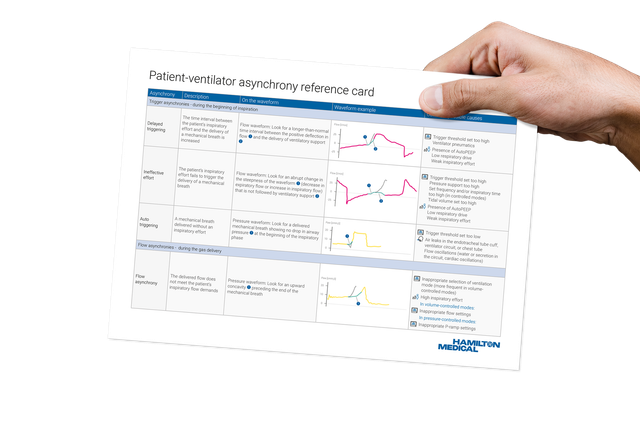Asynchronien zwischen Patient und Beatmungsgerät beruhen auf einer mangelnden Abstimmung zwischen den Inspirations- und Exspirationszeiten des Patienten und des Beatmungsgerätes. Eine gängige Methode, mit der Asynchronien erkannt werden, ist die Untersuchung der Kurvenformen am Beatmungsgerät. Es gibt verschiedene Typen von Asynchronien, die an ihren markanten Eigenschaften in der Kurve erkennbar sind. Ein gut geschultes Auge kann Asynchronien erkennen, indem es entweder die Flow- oder die Druckkurve analysiert (


Um Sie dabei zu unterstützen, die typischen Erkennungsmerkmale eines jeden Asynchronietyps zu identifizieren, haben wir eine zweiseitige Übersichtskarte (auch „Cheatsheet“ genannt) zusammengestellt, die Sie unter dem Link unten herunterladen können.
Die Übersichtskarte bietet auf einen Blick:
Die 7 Haupttypen von Asynchronien
Hinweise, was bei der Druck- und Flow-Kurve zu beachten ist
Ein grafisch dargestelltes Beispiel für eine Kurvenform mit Hervorhebung des auffälligsten Erkennungsmerkmals
Häufige mögliche Ursachen für die verschiedenen Typen von Asynchronien
Verpassen Sie nicht die Gelegenheit, Ihre Kenntnisse in der maschinellen Beatmung zu erweitern.